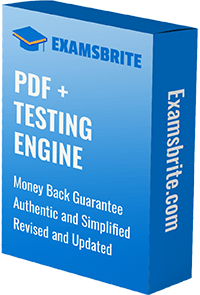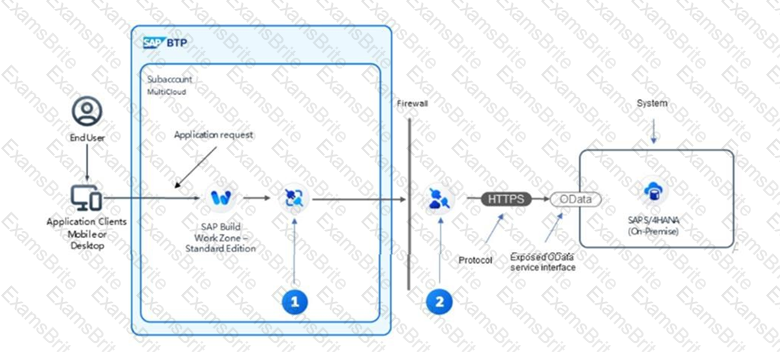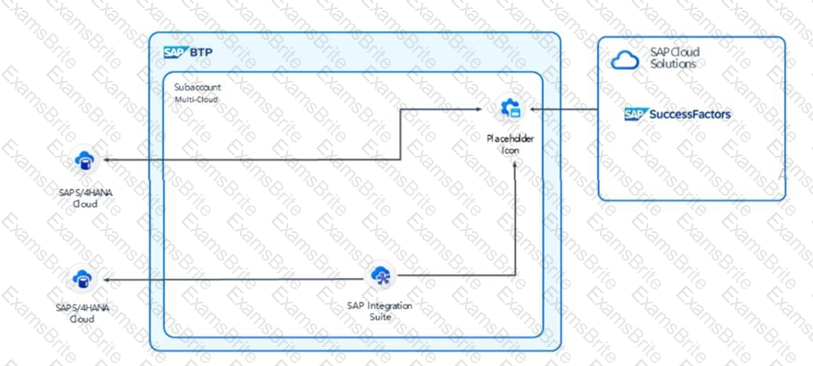
SAP Certified Professional - Solution Architect - SAP BTP
Last Update Sep 13, 2025
Total Questions : 40
We are offering FREE P_BTPA_2408 SAP exam questions. All you do is to just go and sign up. Give your details, prepare P_BTPA_2408 free exam questions and then go for complete pool of SAP Certified Professional - Solution Architect - SAP BTP test questions that will help you more.



A company is implementing SAP S/4HANA Cloud along with SAP BTP. They need a customer-facing application for the general public. The application also needs to use its own unique SAP BTP subdomain. As a solution architect, you have been asked how a unique domain name can be accomplished.
Which of the following can serve as an option? Note: There are 2 correct answers to this question.
You have been hired as a solution architect and it's your first day on the job. You participate in a meeting discussing the design and development of an extension to SAP S/4HANA Cloud. In the meeting, you are told:
"We have determined that the BusinessPartner (A2X) API in SAP S/4HANA Cloud is insufficient for our needs. Fortunately, the API is extendable via key user extensibility. We are currently creating a diagram with the technical building blocks of the extension".
In which SAP Application Extension Methodology phase is the project?
You are a solution architect assigned to a customer business transformation project.
Which solutions would you recommend the customers adopt to analyze and to optimize their procurement process to exceed industry benchmarks? Note: There are 2 correct answers to this question.
A company is decommissioning its legacy ERP system in favor of adopting SAP solutions. The company is not sure which specific solutions to adopt. The company has three main business goals:
•Maintain several unique business processes.
•Maintain the solutions with a small budget, and limited time and resources.
•Integrate several non-SAP solutions.
Which combination of solutions should the customer adopt?
A customer wants to establish connectivity between applications being executed by end users and the on-premise backend system (SAP S/4HANA).
Based on the attached diagram, which combination is necessary to establish the connectivity?

You are a solution architect and your client needs help in choosing the appropriate SAP solution to use for their application design. #
•SAP SuccessFactors will trigger an "event" when employees complete a variety of tasks such as changing their address or updating their W-4 information.
•The event will be caught by one of SAP's event solutions and it will trigger (via webhook) either SAP Integration Suite or SAP S/4HANA Cloud as needed.
•The number of events processed is not expected to be high.
•A cloud solution is preferred.
Which of the following could be used in place of the "Placeholder Icon" in the attached diagram? Note: There are 2 correct answers to this question.

You are a solution architect on a brownfield project where an SAP ECC 6.0 system is being migrated to SAP S/4HANA Cloud public edition. Two mission- critical legacy applications must be migrated to the new system. There is some debate on the project team as to the appropriate programming model to use:
•Application 1 was originally written using classic ABAP. The underlying SAP tables that the application originally relied on have been removed and the data now exists in a new simplified table in SAP S/4HANA Cloud public edition (to which table extensions are not permitted). Additional data needed for the application resides in SAP Ariba. Remote interfaces exist for both to select the data.
•Application 2 was originally written using Java and relied upon tables from the SAP ECC 6.0 system as well as SAP PLM 4.0. The PLM system will be retired; however, the SAP S/4HANA Cloud public edition instance has all the data needed for the application. No remote interfaces exist to select the data.
Which of the following approaches should the customer use? Note: There are 2 correct answers to this question.
A customer's sales department is having problems with governmental authorities dealing with transparency around logging events related to security and other compliance topics.
As an SAP Solution Architect, which SAP BTP service would you recommend for being compliant with regulations?
As a solution architect, you are asked for your opinion on an optimal integration. You are told that the data resides in two places, SAP S/4HANA (on- premise) and third party APIs. You are also told the following requirements:
•Periodically read the data from both systems, perform several transformations of the data, and forward the results to a business partner.
•Monitoring is to be done by a dedicated group from IT with SAP products.
•Maintenance of the integration part has a small budget, limited time, and limited resources. Which of the following solutions would you recommend as optimal for the design?
A client's IT department has half a dozen subaccounts. They are having problems with the administration of the subaccounts as well as the corresponding global account.
Which SAP BTP service would you recommend to the customer, to design and develop a custom application to perform their administrative tasks?
A fit-to-standard analysis determined that the provided SAP Fiori App for SAP S/4HANA Cloud private edition was insufficient based on existing business requirements, and that a new front-end app must be built.
As a solution architect, you are asked to propose a solution and are told the following:
•The backend logic running on SAP S/4HANA Cloud private edition is sufficient and an appropriate remote API for create, read, update, and delete (CRUD) operations exists.
•The front-end app must be able to run on a variety of devices such as mobile phones and tablets.
•Front-end app instances must scale up or down automatically based on administrator- provided scaling parameters.
Which of the following runtimes would be optimal for the new front-end app? Note: There are 2 correct answers to this question.
A company is struggling with organizing and managing their data. Their data is distributed across many databases and datastores. The data structures are also very inconsistent. They need harmonized aggregated data to be used as the basis of advanced highly summarized reports for senior executives. They prefer to use the latest SAP solutions.
Which of the following solutions would you recommend?